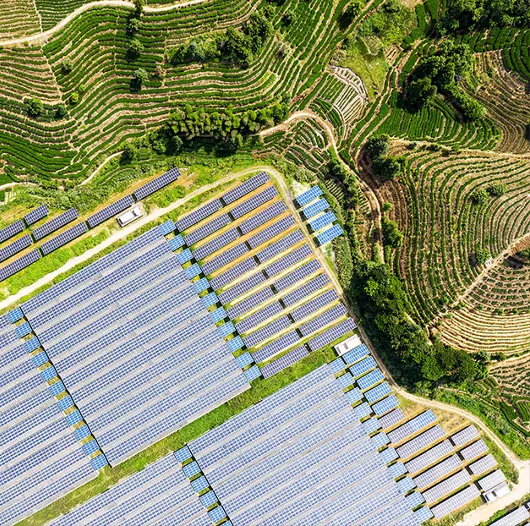Ensuring Accountability in Financing the Green Economy


Across the globe, trillions of dollars of investments are pouring into electrical vehicles, renewable energy and other sustainability efforts. Over the past 36 months, banks and investment firms have taken a leading role in driving sustainable investments by raising money for these initiatives through green bonds and by providing lending to green projects. In total, green finance is currently a $30 trillion-plus business. Financial services leader Goldman Sachs has pledged $750 billion towards sustainable finance projects.
However, Green Finance is not only an economic, social and environmental issue, but a data issue as well. Investors and financial services institutions need to be able to assess the real impact and risk of these projects in a transparent way. That can only happen when they are able to access the information they need, quickly, and be confident in its accuracy and completeness. Historically, managing financial risks and regulations has been a data problem and that continues today with green finance.
Proving that green is green isn’t always easy, though. Today, the investment community, insurers and government institutions must draw their conclusions from often fragmented information. This makes it hard to communicate the goals, impact and progress of the projects to the investors and stakeholders requiring that information. Standardized key performance indicators (KPIs) are needed to increase transparency between the funders and projects.
Banks are vital to the sustainability ecosystem for the simple fact that they hold money and the power to incentivize and keep the rest of the ecosystem accountable. Today, bank loan officers must be able to determine that a farmer in a developing country has a project that is both financially viable and able to provide social and environmental benefits. This may mean demonstrating that the farmer’s supply chain is free of compromising elements. It could require showing the fertilizer the farmer uses won’t have a negative impact on the soil and nearby waterways.
In addition to safeguarding people and the earth, these steps help the bank protect against regulatory or environmental risks that could threaten the project’s long-term viability and the farmer’s ability to repay the loan.
Green bonds are another growing area that depends on accurate, transparent data. These bonds are an investment vehicle for a portfolio or project that is focused on environmentally friendly and sustainable initiatives, like the electrification of transportation.
The first labeled green bond was launched in 2008 by the World Bank to support climate-focused projects. By 2015, the World Bank had issued $8.5 billion in over 100 green bond transactions in 18 currencies, supporting about 70 climate mitigation and adaptation projects around the developing world.
All bond issuers must meet regulatory and rating agency requirements for disclosure. Increasingly, these disclosures include environmental information. If a bank issues green bonds to investors, it is responsible for proving to investors that the projects it plans to finance are truly green.
Consider the four steps in the World Bank’s green bond process: define project selection criteria; establish project selection criteria; earmark and allocate proceeds; monitor and report. In the final step, the issuer monitors the implementation of the green projects and provides reports on the use of proceeds and the expected environmental sustainability impacts.
Global regulations are being explored to define sustainable financial reporting guidelines. This burden will likely fall on banks across the globe to disclose how and when they report on activities involving sustainability.
Hitachi Vantara’s mission is to accelerate the green finance ecosystem by speeding investments that promote sustainability. For example, our sustainable finance approach uses blockchain, the internet of things (IoT) and artificial intelligence (AI) to connect Hitachi’s digital technologies with the financial sector to institutions and companies overcome potential hindrances.
Our sustainable finance platform can play a key role in identifying the true impact. Once a green project starts generating operational data, it is monitored using IoT devices. This information is communicated to the platform. At this point, blockchain takes over. Blockchain is in essence a database that provides a greater level of transparency.
Using blockchain, the information from the IoT devices is converted into KPIs. The type and complexity of the KPIs depend on the project. Blockchain can be used to tailor the amount and type of data according to the audience, such as investors, project owners, the public, auditors and regulators. This can help address privacy, security or competition concerns. But at the same it also ensures that there is no chance of tampering the information anywhere from source to the final dashboard that is made public.
Our sustainable finance platform aims to connect Hitachi’s digital technologies and experience in the decarbonization of the energy and transportation sectors with the financial sector, to accelerate investments that promote sustainability.
Hitachi Vantara has also partnered with FinTech Legal Labs, a business accelerator program provided by law firm Ashurst, to accelerate a greener future through data-driven analysis of sustainable business initiatives. This partnership enables much needed growth and investment in fintech startups, ensuring they have the right legal, technology and governance infrastructure in place.
Green finance is fundamental to saving the planet, and data is fundamental to green finance. Data transparency and data availability can justify investments that will create smart cities, smart spaces and a sustainable future. And proving that green finance is green makes good business sense. Data continually shows that the next generation of customers want to do business with banks and companies that prioritize sustainability.
Click here to learn more about decreasing risk while increasing revenue with financial services from Hitachi Vantara.
Learn More About Hitachi + Sustainability
Suranjan Som is Vice President of Financial Services at Hitachi Vantara.

Suranjan Som is Vice President, Head of Financial Services Consulting, and Client Engagement Partner, EMEA, at Hitachi Vantara.